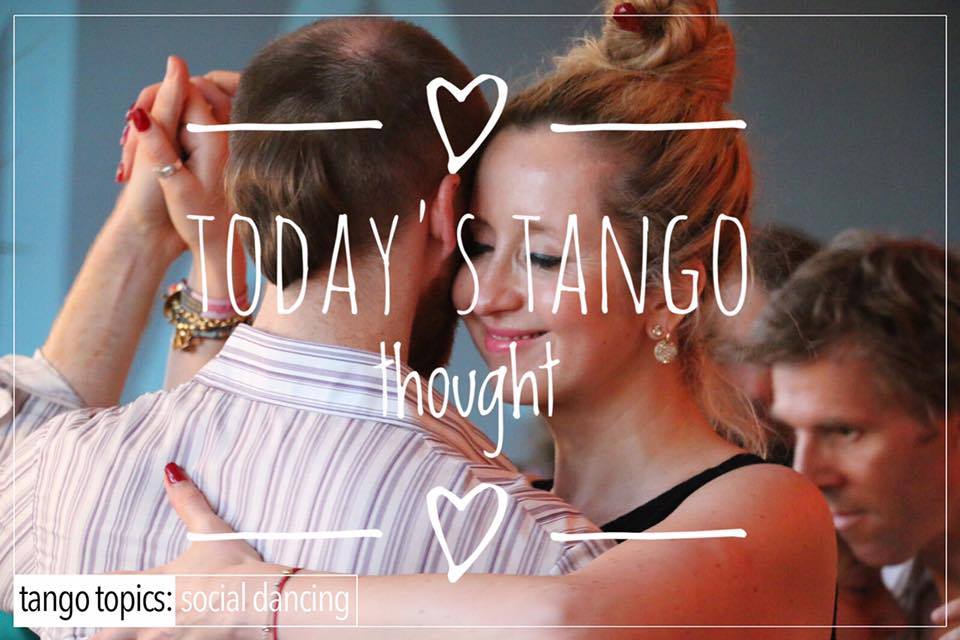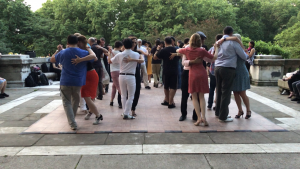There is an unspoken, unwritten rule with regards to Argentine Tango. Actually there are a few of them. However, one of them is that once you are acknowledged you are now persona grata. However, if you are NOT acknowledged….then you are Persona Non-Grata. You don’t exist. They don’t see you.
And the more that you stand in front of them, the less that they’ll see you.
You are the ‘Unseen’.
The fact is that this is socially rude behavior in some people’s eyes, especially if you come from another social dance where everybody dances with everyone and no one ever says ‘No’. Tango is a different experience altogether, top to bottom. It’s one of those dances where you really do have to study the codígos to understand why things are done the way that they’re done so that you don’t get frustrated or pissed off. The fact is that this behavior has a purpose. Before we get to that specific purpose, there is another idea that should be mentioned in part here because they’re easily confused with each other.
Let’s assume for the moment that you know “X”. You’ve danced with “X” previously. And you’ve been friendly with “X”. However when you see them they don’t acknowledge your presence immediately until later, after you’ve already entered the room, sat down, gotten a drink, and then perhaps danced around the room a bit with a few partners. So the acknowledgement of your presence may be a really simple thing as they didn’t see you. Quite honestly, they’re so busy with other things, that you just didn’t pop up on their radar. Depending on the size of the room, the number of people in the room this is easily the case. Especially at the more busy and popular milongas. It’s easy to miss someone for hours like this, and in fact miss them for an entire night until you both find yourselves out on the street afterwards both saying the same thing “Where were you all night long ?”. This can and does happen.
However there is the more unpleasant side of this behavior which is that you’re deliberately being shunned, and shunned for a reason. However the only way that you’ll know what that reason is, is to ask said individual what the effing problem is, and then you’re into someone’s issues. The two behaviors look very similar to each other because it will appear as though while you recognize “X”, they don’t see you, you are The Unseen. One reason why this happens is the size of the room, still another is the volume of people in the room, still one more is that they do see you but are they’re saving you until later until they’ve gotten their ‘duty’ dances out of the way, or they’re placing you in order so that you are greeted properly and danced with properly. This may be the case, and you really have no way of knowing if you’re being shunned or not.
So what’s the best thing you can do ?
Go about your business, dance with whomever you want to but for the love of christ, do not get up in someone’s cabeceo/mirada hoping for a dance. Acknowledge their presence and if they respond in kind, you know that everything is cool. If not, wait it out or ask “WTF ?”. Whatever works best for you. But do yourself a small favor, don’t get up in their face about it UNTIL AFTER the milonga. Don’t cause a scene, take it outside and chillax with a simple question, “Where were you ?”, and let things roll from there. To be fair if said “unseen” behavior continues to occur, then there’s some indirect ‘shunning’ going on and a few words to that effect wouldn’t kill you so that you stop having the same interaction with that person. Understand that some people, probably yourself included, have a problem with confrontation. So take it in stride, chillax, this is someoen’s experience and story that’s in their head about you. Do your best to correct that story if it’s not true, but the end result is to chillax. 🙂 YMMV.











